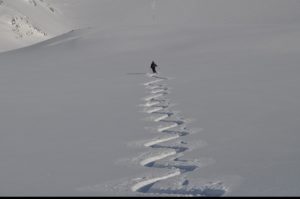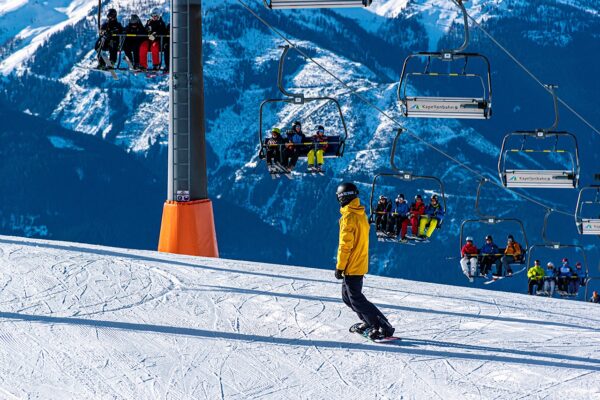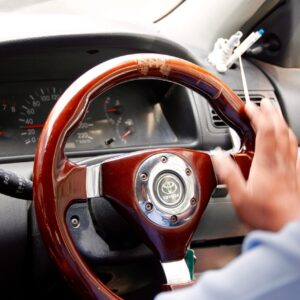Closed ski lifts and plenty of snow. The perfect opportunity for ski mountaineering!
Ski mountaineering is one of the most complete and spectacular outdoor winter sports, an activity that, if you approach it right and take the proper precautions, gives you a unique experience of the mountains with ascents surrounded by nature and the adrenalin-rush excitement of the descent.
Ski mountaineering is nonetheless a complex discipline that can be dangerous if you approach it too casually. Here, therefore, is an interesting article in Gazzetta.it with 5 useful tips for skiing in safety from the Corpo Nazionale Soccorso Alpino.
Enjoy!
“With ski lifts in Italy’s mountain resorts still closed, the 2020-21 winter season still offers plenty of snow right across the Alps to attract outdoor sports lovers who can visit the slopes and peaks while still respecting the regulations currently in force. For ski mountaineers and snowshoe hikers in particular, it is important to bear in mind certain rules of conduct in the mountains. They also need to anticipate the potential risks, know how to deal with emergencies and, equally importantly, know when to abandon an excursion when conditions dictate.
The Corpo Nazionale Soccorso Alpino e Speleologico (National Alpine and Speleological Rescue Corps) is active in Italy with qualified technicians working in the mountains, caves and grottos: to help plan a winter excursion in safety here is a summary of the main recommendations by Roberto Misseroni, born in Trento in 1965 and a national instructor for the Corps. “At the current time (early January 2021, ed.) we have an abundance of snow following multiple snowfalls”, explains Misseroni, “that have created several layers. Snowfalls are often accompanied by wind, a key element in the formation of snow slabs that generally tend to be softer at high level and firmer at medium-low level. These slabs are often embedded in the snowpack and are difficult to recognise: you must therefore be careful”.
1) CHOOSING YOUR ROUTE
It is important to look at the meteorological-snow bulletins to be able to assess the specific conditions in the area, “which take a number of factors into account”, he explains, “such as the amount of snow that has fallen and the direction and strength of the wind during the snowfall”. And having assessed the level of danger, “you should then choose the area for your excursion: if the danger is grade 4 you should totally avoid the area”, Misseroni continues. “Whereas a grade 3 danger is a very common situation in winter that requires interpretation. How? By assessing your personal capabilities and choosing the right route”.
These two elements can be summed up in a practical piece of advice: “for those with little experience I recommend going on slopes with a moderate level of risk, those generally suitable for snowshoes, or preferably following routes that are already marked – for both snowshoes and ski mountaineering – by the local tourist bodies”, Misseroni explains.
2) TOOLS FOR PLANNING THE EXCURSION
Preparing your route at home is key in raising your awareness. “Looking at a map to understand the critical areas of the route is good practice, as is the ability to recognise any alarm bells during the trip and, if necessary, to abandon the excursion”, says Misseroni. When changing direction during “diagonal” ascents, for example, if you notice sections of snow coming away “this is a sign that the surface layers are sliding and that there is therefore a risk of avalanche”.
3) CRITICAL OBSERVATION OF THE ROUTE
“As you proceed along the route you need to pay attention to the morphology of the terrain”, says Misseroni. “For example, by avoiding gullies and areas next to ridges, where a lot of wind-driven snow can build up. Also very steep areas, as well as border areas between large pastures and forests where snow builds up considerably and can pose an avalanche risk”. For those with less experience (particularly with snowshoes), keeping to forest roads is an ideal solution. The CSNAS national instructor reminds us that “the most precarious conditions in terms of sliding snow masses exist in the 2-3 days after a snowfall, a ‘window’ of time that can last several days if the snowfall is accompanied by wind and if the snow slabs are not stabilised by a rise in temperatures”.
4) THE SELF-RESCUE KIT
Misseroni also underlines the importance of always carrying an avalanche rescue kit made up of a transceiver, a shovel and a probe, “which requires a certain amount of training to use correctly and quickly”, he explains. “Because you should always remember that, in an avalanche, the effectiveness of any rescue nearly always depends on how well-prepared your companions are to take action”. In the unfortunate event that someone is buried by an avalanche, “the rescue operation must take place within 15 minutes on average, and statistically speaking it is difficult for us as rescuers to provide this first, essential assistance”.
5) HOW TO CALL FOR HELP
“If necessary, when you see a mass of snow that has broken away and may have buried people, it is essential to call the single European emergency number 112, in areas where this is active, or 118 (in Italy)”
All useful and valuable advice which, if followed, will help to ensure you enjoy the perfect skiing trip, a unique and unforgettable experience:







